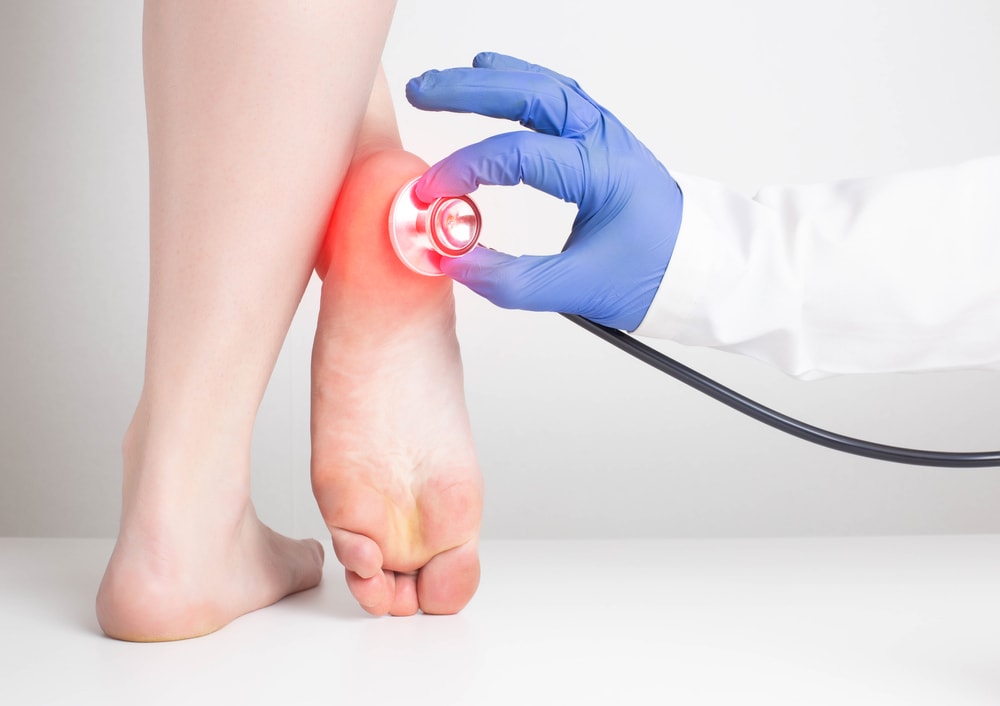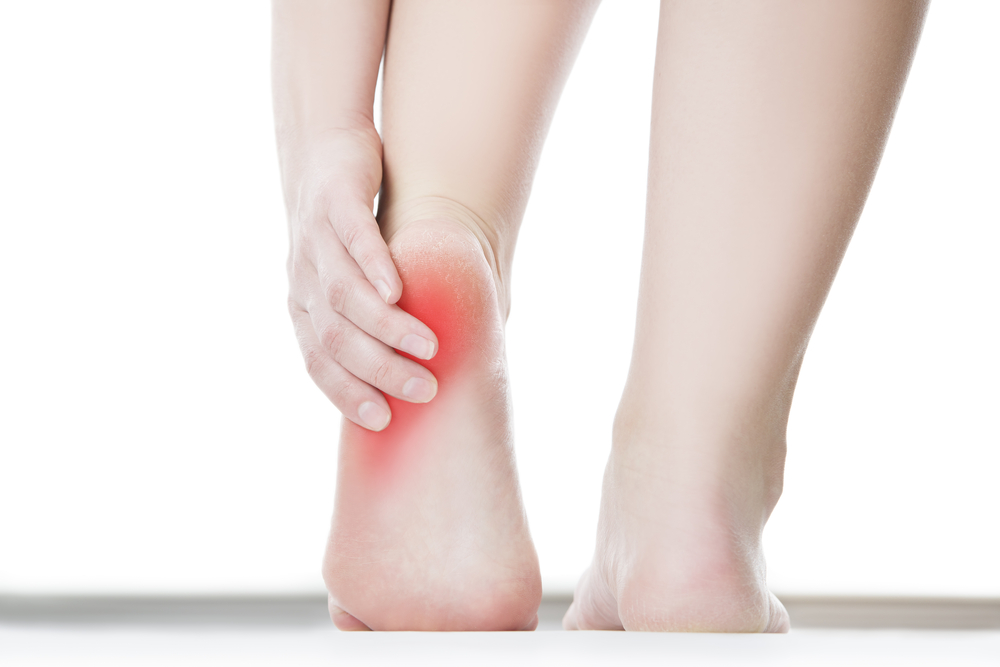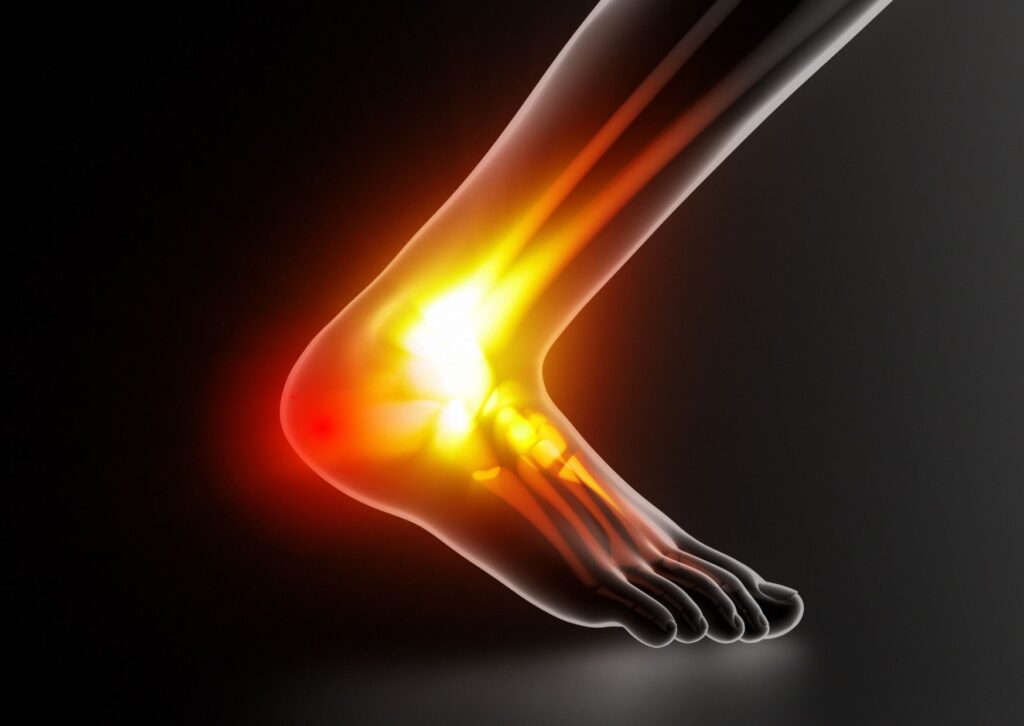Heel Pain
Heel Pain
Table of Contents
What is Heel Pain?
Heel pain is one of the most common reasons patients visit a podiatrist. It can feel like a sharp stab, dull ache, or throbbing sensation in the bottom, back, or sides of your heel. For many, the pain is worst in the morning or after long periods of rest, but it can also worsen throughout the day with standing or walking.
The heel is a complex structure that absorbs shock and supports your body weight. Pain in this area often means something in the bones, tendons, ligaments, or nerves is inflamed or damaged.

What causes heel pain?
Heel pain can come from direct trauma to your heel or an underlying medical condition.
One common cause of heel pain is plantar fasciitis, the inflammation of the thick band of tissue (the plantar fascia) that connects your heel bone to your toes. This condition causes a stabbing pain that makes it difficult to put pressure on your heel when standing or walking.
Other common causes of heel pain include:
- Bursitis
- Heel spurs
- Stress fractures
- Achilles tendonitis
- Rheumatoid arthritis
- Baxter’s neuritis (nerve entrapment)
- Peripheral neuropathy (nerve damage)
The team also offers diagnostic and treatment services for Sever’s disease, a bone injury in children that affects the growth plate in the back of the heel that attaches to your Achilles tendon.
It’s important that you schedule a diagnostic evaluation at Toetal Podiatry for heel pain that’s severe, or for persistent swelling in and around your heel.
How is heel pain diagnosed?
To understand the cause of your heel pain, the providers at Toetal Podiatry review your personal and family medical histories. They also physically examine your heel and foot, checking for areas of tenderness and swelling.
You may need diagnostic imaging tests, like X-rays or an ultrasound, to evaluate the structures in your heel. Testing can reveal plantar fasciitis, arthritis, and other conditions.
Once your Toetal Podiatry provider pinpoints the cause of your pain, they create a treatment plan that focuses on pain relief, so you can stay physically active.

What are the symptoms?

Symptoms depend on the underlying cause, but heel pain often presents as:
Sharp, stabbing pain in the heel upon waking up
Aching or burning pain that worsens with activity
Swelling or tenderness in the heel area
Redness or warmth
Stiffness or tightness in the arch or calf
Limping or difficulty bearing weight
FAQs about Heel Pain
Q: Is heel pain normal as you get older?
A: It’s common but not “normal.” Heel pain is treatable at any age and should not be ignored.
Q: How can I prevent heel pain from returning?
A: Wear proper shoes, use orthotics if needed, stretch your calves and arches regularly, and maintain a healthy weight.
Q: When should I see a podiatrist?
A: If heel pain lasts more than a few days, gets worse, or affects your ability to walk, it’s time to get evaluated.
Q: Can I keep exercising with heel pain?
A: You may need to rest or modify your routine. Avoid high-impact activities until a specialist has assessed your condition.
Our Reviews
EXCELLENTTrustindex verifies that the original source of the review is Google. Dr Erfanian was awesome. Super patient, great bedside manner, and was able to diagnose issues and resolve them more than other doctors were! 10/10!Posted onTrustindex verifies that the original source of the review is Google. Dr. Rahman was amazing. She really explained everything clearly, she worked hard with the pharmacy and my insurance company to make sure I received the best care. Would definitely recommend.Posted onTrustindex verifies that the original source of the review is Google. Honestly, Dr. Wu is one of the best doctors I’ve ever seen. She combines medical expertise, compassion, and efficiency perfectly. I left feeling cared for, confident, and pain-free. Highly, highly recommend her to anyone looking for an excellent podiatrist! I also really appreciated how thoughtful she was when prescribing antibiotics, making sure they were the best choice for my infection and compatible with my lifestyle and job. That level of attention and personalized care is rare.Posted onTrustindex verifies that the original source of the review is Google. Dr. Wu is absolutely amazing! She saw me right away, took X-rays the same day, diagnosed my issue immediately, and even performed an in-office procedure that completely resolved my problem on the spot. She was so kind, gentle, and thorough — she explained every step clearly and made sure I felt comfortable the entire time.Posted onTrustindex verifies that the original source of the review is Google. Dr. Rahman is incredible! She’s extremely knowledgeable and her bedside manner immediately put me at ease. The booking and check in process was seamless and little to no wait time. The receptionists were all very friendly and accommodating. 10/10 highly recommend!Posted onTrustindex verifies that the original source of the review is Google. Dr Rahman was amazing and so helpful! Would highly recommendPosted onTrustindex verifies that the original source of the review is Google. Dr. Wu is is amazing! Super knowledgeable, patient, and caring. She took the time to explain everything clearly and made me feel comfortable throughout the visit. The staff was also very welcoming and efficient. I felt like I was in great hands from start to finish — highly recommend if you’re looking for a podiatrist who really listens and cares.
Our Locations
Contact Us
- 917-261-4291
- 917-594-4881
Locations
- 274 Madison Ave #1001, New York, NY 10016
- 26 Broadway Suite 931, New York, NY 10004

